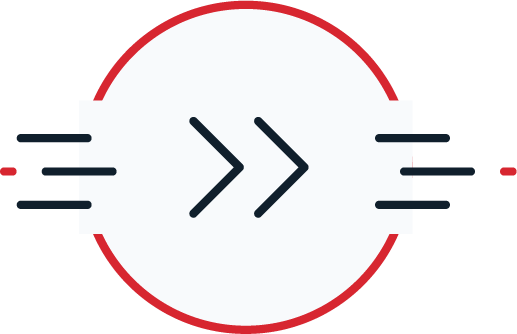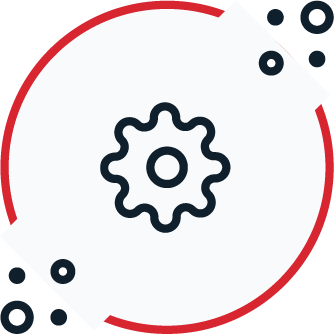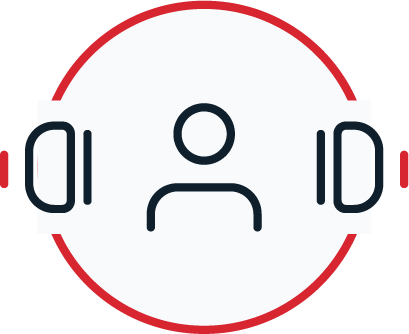Agile Marketing Overview
05/15/2024
In the ever-evolving landscape of modern marketing, agility has become not just a buzzword, but a necessity. Enter agile marketing – a revolutionary approach that empowers teams to adapt, iterate, and thrive in the face of constant change. Born from the principles of agile software development, agile marketing embraces flexibility, collaboration, and data-driven decision-making to deliver impactful campaigns with speed and precision. In this blog post, we’ll delve into the core concepts of agile marketing, explore its benefits, and provide practical insights on how brands can leverage this methodology to stay ahead in today’s fast-paced market environment. Whether you’re a seasoned marketer seeking to revitalize your approach or a newcomer eager to embrace innovation, prepare to unlock the potential of agile marketing.

What Is Agile Marketing
Agile marketing is a modern methodology that applies the principles of agile software development to the realm of marketing. At its core, agile marketing prioritizes adaptability, collaboration, and iterative improvement in executing marketing strategies. It revolves around breaking down marketing initiatives into smaller, manageable tasks called “sprints,” which are executed in short time frames. By embracing rapid iteration and continuous feedback, agile marketing enables marketing teams to respond swiftly to changes in market dynamics, customer preferences, and emerging trends. This iterative approach fosters a culture of experimentation and learning, allowing marketers to refine their strategies based on real-time insights and data-driven feedback. Ultimately, agile marketing empowers teams to deliver more targeted, relevant, and impactful campaigns while maximizing efficiency and growing revenue. Lastly, and perhaps most importantly, in order for agile marketing to drive continuous improvement for your brand– it needs a strong measurement foundation.
Agile Marketing vs Traditional Marketing

Agile marketing stands in stark contrast to traditional marketing methodologies by its very nature. Where traditional marketing often follows a linear, long-term planning approach, agile marketing operates on a more flexible, iterative model. Traditional marketing plans are typically crafted with a fixed scope and timeline, leaving little room for adjustments in response to evolving market conditions or customer feedback. In contrast, agile marketing embraces change and uncertainty, encouraging teams to prioritize quick adaptation and continuous improvement over rigid adherence to a predetermined plan. While traditional marketing may excel in providing a structured framework for long-term strategy execution, agile marketing thrives in dynamic environments, enabling teams to pivot swiftly, experiment freely, and deliver value to customers with greater speed and responsiveness.
Benefits of Agile Marketing
Here are the specific advantages of agile marketing:
Adaptability
Agile marketing allows teams to quickly adapt to changes in the market, customer preferences, media consumption changes, competitive efforts, or internal priorities. By breaking down projects into smaller, manageable tasks and iterating frequently, teams can respond swiftly to new information or emerging trends.
Continuous Improvement
Agile marketing promotes a culture of continuous improvement, with regular feedback loops and iterative cycles enabling teams to learn from their experiences and refine their strategies over time. By experimenting with different approaches and analyzing results, teams can identify what works best and make data-driven decisions to optimize their campaigns.
Speed
Speed is a paramount advantage of agile marketing, empowering teams to swiftly respond to market dynamics and customer feedback. By adopting iterative cycles of planning, execution, and evaluation, agile methodologies enable rapid adjustments to campaigns and strategies. This agility allows marketers to seize emerging opportunities, capitalize on trends, and address challenges with flexibility and efficiency. In a fast-paced digital landscape, the ability to pivot quickly not only enhances competitiveness but also fosters innovation and responsiveness, ensuring brands stay ahead of the curve.
Collaboration
Agile marketing fosters collaboration and cross-functional teamwork by bringing together individuals from different departments or disciplines to work towards common goals. This collaborative approach encourages the sharing of ideas, expertise, and feedback, leading to more innovative and effective marketing strategies.
Efficiency
Agile marketing streamlines processes, reduces waste, and prioritizes high-impact tasks, leading to increased efficiency and productivity. By focusing on delivering value to customers in small increments, teams can minimize time spent on unnecessary work and maximize the impact of their efforts.
Customer-Centricity
Agile marketing puts the customer at the center of the process, focusing on delivering value and meeting their needs and preferences. By regularly soliciting feedback from customers and incorporating it into their strategies, teams can ensure that their marketing efforts are relevant, engaging, and impactful.
Risk Mitigation
Agile marketing helps mitigate risk by allowing teams to test ideas and gather feedback early and often (test-and-learn). By breaking down projects into smaller iterations and validating assumptions through experimentation, teams can identify potential issues or obstacles before they become major problems and adjust their strategies accordingly.
Is Agile Marketing Difficult?
Although agile marketing offers a plethora of valuable benefits, there are a few challenges that teams may encounter when adopting this strategy:
Cultural Shift
Adopting agile methodologies often requires a significant cultural shift within an organization. Teams accustomed to traditional, hierarchical structures may struggle to adapt to the collaborative, self-organizing nature of agile marketing. Overcoming resistance to change and fostering a culture of trust, transparency, and experimentation can be challenging but essential for successful agile implementation.

Resource Allocation
Agile marketing requires teams to be flexible and adaptable, which can pose challenges in resource allocation. Balancing competing priorities, managing workloads, and ensuring that team members have the necessary skills and resources to deliver on their commitments can be complex, particularly for brands with limited resources or competing demands.

Siloed Departments
Siloed departments or teams can impede collaboration and communication, making it difficult to implement agile practices effectively. The main issue with siloed departments is that marketing budgets are assigned to each department and channel. But when evidence arises that budgets need to shift to take advantage of market opportunities, many teams move to try to prevent the budget shifts that are needed to meet the opportunity.

Speed vs. Quality
Agile marketing emphasizes speed and responsiveness, which can sometimes come at the expense of quality. Rushing through iterations or sacrificing thorough testing and validation processes in the pursuit of quick results can lead to subpar outcomes or even damage to the brand reputation. Finding the right balance between speed and quality is essential for long-term success (hint: with OptiMine, you can have the best of both worlds!)

Measuring Success
Traditional metrics and KPIs may not always align with agile principles, making it challenging to measure the success of agile marketing initiatives. Shifting towards more iterative, data-driven approaches to measurement and adopting new metrics that focus on outcomes rather than outputs can help teams track progress and demonstrate the value of agile practices to stakeholders. (hint: OptiMine exists to help your brand overcome this challenge by measuring quickly and in granular detail!)

How Does Agile Marketing Work?
Implementing Agile marketing as a team involves several key steps and practices:
1. Educate and Train
Start by educating team members about agile principles and practices. Provide training sessions or workshops to ensure everyone understands the fundamentals of agile marketing and how it differs from traditional approaches.
2. Define Goals and Priorities
Clearly define your marketing goals and priorities, ensuring they align with broader business objectives. Break down larger goals into smaller, actionable tasks or user stories that can be prioritized based on value and impact.
3. Form Cross-Functional Teams
Assemble cross-functional teams composed of individuals with diverse skills and expertise relevant to your marketing initiatives. Encourage collaboration and shared ownership of projects to foster a sense of accountability and collective responsibility.
4. Adopt Agile Frameworks
Choose an agile framework that best suits your team’s needs and preferences. Tailor the framework to fit your marketing processes and workflows, adapting it as necessary to accommodate the unique requirements of your team and projects.
5. Implement Iterative Cycles
Break down marketing initiatives into smaller iterations or sprints. Define clear goals and deliverables for each iteration, focusing on delivering value to customers and stakeholders with each increment.
6. Embrace Continuous Feedback
Encourage open communication and feedback loops throughout the agile marketing process. Regularly solicit input from customers, stakeholders, and team members to gather insights, validate assumptions, and identify areas for improvement.
7. Prioritize Flexibility and Adaptability
Embrace change and uncertainty, recognizing that priorities may shift and new opportunities or challenges may arise. Be prepared to adjust plans and strategies as needed based on feedback and emerging trends, prioritizing flexibility and adaptability over rigid adherence to a predefined plan.
8. Foster a Culture of Continuous Improvement
Cultivate a culture of continuous learning and improvement within the team. Encourage experimentation, celebrate successes, and embrace failures as opportunities for learning and growth. Regularly reflect on your processes and practices, seeking ways to optimize efficiency, effectiveness, and collaboration.
9. Measure and Monitor Performance
Establish key metrics and performance indicators to measure the success of your agile marketing initiatives. Track progress against goals, analyze data and feedback, and use insights to inform decision-making and future iterations. Adjust your strategies and tactics as needed to drive continuous improvement and achieve desired outcomes.
10. Involve Executives to Drive Accountability and Adoption
The last step to consider is from OptiMine’s “Agile Marketing Measurement Framework” (which is laid out in our “Guide to Marketing Measurement” blog post, here). Involving brand executives/stakeholders in the agile marketing process is crucial in order to drive accountability and adoption. If you forget to include important stakeholders in the process, things can get political (and/or slow down any sort of change)– so involving executives as much as possible from end to end is ideal.
Examples of Agile Marketing In Action
Agile marketing can take many forms, but here are a few examples:
Test-and-Learn Approach to Optimization
Agile marketing encourages a test-and-learn approach to optimization, allowing teams to experiment with different strategies and tactics to identify what resonates most with their audience. For example, an e-commerce retailer may conduct A/B tests on their website to compare the performance of different product page layouts, CTAs, or promotional offers. By analyzing test results and iterating based on insights, the team can continuously improve the user experience and drive conversions.

Real-Time Social Media Engagement
Many brands leverage agile marketing principles to respond swiftly to events or trends on social media. By monitoring conversations and engagement in real-time, teams can capitalize on opportunities to join relevant conversations, share timely content, and engage with their audience in a meaningful way. For example, during major events like the Super Bowl or the Oscars, brands often deploy agile social media teams to create and share content on-the-fly, capitalizing on trending topics and driving engagement.

Iterative Campaign Development
Agile marketing enables teams to develop marketing campaigns iteratively, allowing for rapid experimentation and optimization based on feedback and data. For instance, a software company may launch a series of targeted email campaigns to promote a new product feature, testing different messaging, offers, and segmentation strategies in each iteration. By analyzing campaign performance in real-time and adjusting tactics accordingly, the team can optimize results and maximize ROI.

OptiMine-Specific Agile Marketing Measurement Case Studies
Here are some OptiMine-specific agile marketing measurement case studies/examples:
- “How OptiMine’s Agile Marketing Measurement & Optimization Drove a 14% Increase in Conversions at Aflac”
- “How Citibank Uncovered Opportunities that Other Vendors Missed with OptiMine’s Agile Marketing Measurement”
- “How OptiMine’s Agile Marketing Measurement Helped American Signature Furniture Achieve Success During the Pandemic”
- “How OptiMine Helped UnitedHealthcare Realize a 50x Solution ROI with Agile Marketing Measurement”
Why Agile Marketing Measurement Is Important
Agile marketing measurement is crucial for providing teams with actionable insights into the effectiveness of their marketing efforts and guiding strategic decision-making. In the fast-paced and dynamic landscape of modern marketing, traditional metrics alone may not suffice to capture the full picture of performance and impact. Agile marketing measurement allows teams to track progress, iterate on strategies, and optimize campaigns in real-time based on data-driven insights. By measuring key performance indicators (KPIs) aligned with business goals and objectives, agile marketing enables teams to identify what’s working well and what areas need improvement, facilitating continuous learning and adaptation. Moreover, agile marketing measurement fosters a culture of accountability and transparency within marketing teams, enabling them to demonstrate the value of their efforts to stakeholders and align activities with broader brand objectives. Ultimately, agile marketing measurement empowers teams to drive better business outcomes, maximize ROI, and stay ahead of the competition in today’s rapidly evolving marketing landscape.
How OptiMine’s Modern MMM Software Supports Agile Marketing Teams
OptiMine’s Modern MMM software is centered around the concept of agile marketing, developed to help your brand’s agile marketing team succeed. Our agile marketing measurement is:
Fast.

OptiMine has the fastest implementation in the market, getting you to higher ROI faster than any other solution.
Actionable.

Only OptiMine measures both digital and traditional marketing channels down to individual ads and campaigns.
Privacy-Safe.

OptiMine’s solution delivers attribution without using PII, cookies, tracking or identity data, making it the most privacy-safe, future-proof solution.
Supported by Experts.

OptiMine tailors consulting support to your brand’s needs with a team of deeply experienced experts.
Contact us today to learn more about how OptiMine’s agile marketing measurement can give your brand a competitive advantage!

